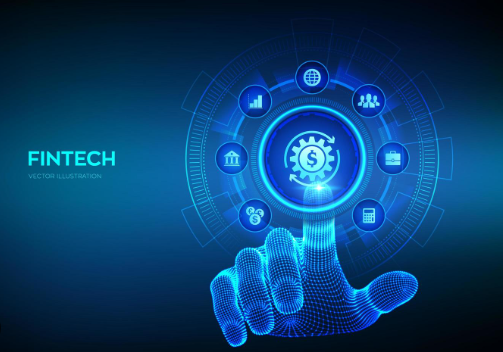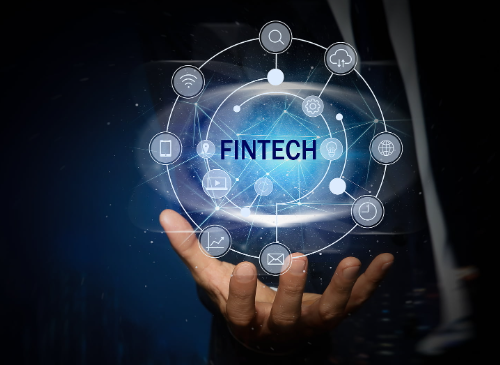A Simple Definition of FinTech

Knowing Financial Technology (Fintech): An All-Inclusive Handbook
Thanks to technological advancements, the financial sector has undergone a transformative revolution in recent years. This revolution, known as financial technology or fintech, is reshaping how we spend, invest, and manage our money. This comprehensive handbook covers the principles of fintech, its various components, advantages, drawbacks, and what the future holds for this vibrant sector.
Fintech Explained
Financial technology, or fintech for short, refers to the integration of technology into financial services to enhance their use. Fintech spans a wide array of applications, from mobile banking and online payment systems to cryptocurrencies and investment platforms. The primary aim of fintech is to simplify and improve financial services, thus increasing their accessibility and efficiency.
The Evolution of Fintech
To fully understand fintech, it is essential to examine its evolution. Although fintech has existed for decades, its rapid expansion began in the early 2000s. Initially focused on digitizing traditional banking services, fintech has since broadened to encompass a variety of offerings. Key milestones include the rise of online banking, peer-to-peer lending, and blockchain technology.
Key Components of Fintech
Fintech is a multifaceted field with several crucial components. Each plays a significant role in the overall ecosystem and contributes to its growth. Here are some prominent fintech components:
Digital Payments and Wallets
Digital payments and wallets are among the most visible aspects of fintech. Systems like PayPal, Apple Pay, and Google Wallet allow users to make transactions electronically without the need for physical cash or cards. These systems have revolutionized transaction processes with their speed and convenience.
How Digital Payments Work
Digital payments ensure secure and swift transactions through encryption and security protocols. When a payment is initiated, the payment gateway processes it by communicating with the relevant financial institutions. This process typically completes in seconds, providing a seamless experience for users.
Peer-to-Peer Lending
Peer-to-peer (P2P) lending platforms connect borrowers directly with individual lenders, bypassing traditional financial institutions such as banks. Platforms like LendingClub and Prosper offer an alternative to conventional loans, often with more competitive interest rates.
Benefits of P2P Lending
P2P lending provides several advantages, including lower interest rates for borrowers and higher returns for lenders. It also offers greater accessibility for individuals who may not qualify for traditional bank loans.
Robo-Advisors
Robo-advisors use algorithms to handle investment management, reducing the need for human intervention. These platforms use algorithms and artificial intelligence to create and manage investment portfolios based on individual preferences and risk tolerance.
Advantages of Robo-Advisors
Robo-advisors offer numerous benefits, such as ease of use, personalized investment strategies, and lower fees compared to traditional financial advisors. They are particularly appealing to individuals new to investing or those who prefer a hands-off approach.

Cryptocurrency and Blockchain
Cryptocurrency, such as Bitcoin and Ethereum, and blockchain technology are among the most disruptive innovations in fintech. Cryptocurrencies offer an alternative to traditional currencies, while blockchain technology supports these digital assets by ensuring secure and transparent transactions.
How Blockchain Technology Works
A blockchain functions as a decentralized ledger where transactions are logged across a network of computers; once a block is appended to the chain, it remains immutable, creating a secure and transparent record-keeping system.
Benefits of Fintech
Fintech offers numerous advantages that are transforming the financial services sector:
Enhanced Accessibility

The advent of fintech has expanded the reach of financial services to a larger audience. Individuals who were previously excluded from traditional financial systems—such as those in remote areas or with limited access to banking services—can now engage in financial activities through digital platforms.
Improved Efficiency
Technology-driven solutions have streamlined financial processes, reducing the time and effort required for various transactions. Automated systems, like robo-advisors and digital payment platforms, enhance accuracy and efficiency, benefiting both consumers and financial institutions.
Lower Costs
Many fintech solutions offer lower costs compared to traditional financial services. For example, online lending platforms and robo-advisors generally have lower fees than conventional banks and financial advisors. This cost-effectiveness makes financial services more affordable and attractive to a larger audience.
Greater Transparency
Advancements such as blockchain technology have increased transparency in financial transactions. Every transaction on a blockchain is recorded on a public ledger, making it easier to track and verify transactions. This transparency helps build trust and reduce fraud in financial systems.
Challenges Facing Fintech
Despite its numerous benefits, fintech also faces several challenges that need to be addressed for continued growth:
Regulatory and Compliance Issues
Fintech companies must navigate a complex regulatory landscape. Financial services, data protection, and cybersecurity regulations vary by country, and ensuring compliance can be challenging, especially for global companies.
Security and Privacy Concerns
As fintech platforms handle sensitive financial data, security and privacy are critical concerns. Data breaches and cyberattacks can have severe consequences for both users and providers. To protect user data and ensure continued trust, fintech companies must prioritize robust security measures.
Technological Disruptions
The rapid pace of technological advancement presents both opportunities and challenges for fintech companies. Staying ahead of technological developments and adapting to new innovations can be particularly difficult for established financial institutions that may resist change.
Financial Inclusion and Digital Literacy
While fintech has improved accessibility for many, there are still gaps in financial inclusion and digital literacy. Some individuals may lack the necessary skills or resources to effectively use fintech solutions. Addressing these gaps is essential to ensure the broad distribution of fintech benefits.
The Future of Fintech
The future of fintech is both exciting and uncertain, with several emerging trends shaping the industry:
Artificial Intelligence and Machine Learning
Artificial intelligence (AI) and machine learning are expected to significantly influence the future of fintech. These technologies can enhance predictive analytics, automate decision-making processes, and improve customer service through chatbots and virtual assistants.
Open Banking
Open banking involves sharing financial data between banks and third-party providers via secure APIs (Application Programming Interfaces). This trend promotes greater competition and innovation in the financial services sector, leading to more personalized and diverse offerings for consumers.
Decentralized Finance (DeFi)
Decentralized finance, or DeFi, refers to a suite of blockchain-based financial applications designed to replicate traditional financial services without intermediaries. DeFi platforms offer services such as lending, borrowing, and trading, all conducted on decentralized networks.
Sustainable and Impact Investing
As awareness of environmental and social issues grows, there is an increasing focus on sustainable and impact investing. Fintech platforms are incorporating ESG (Environmental, Social, and Governance) criteria into investment strategies, allowing investors to support projects and companies aligned with their values.
Digital Currencies and Central Bank Digital Currencies (CBDCs)
Digital currencies, including central bank digital currencies (CBDCs), are gaining traction as a means of modernizing the financial system. CBDCs are issued by central banks and offer a digital alternative to traditional fiat currencies, potentially transforming payment systems and monetary policy.
Conclusion
Financial technology, or fintech, is a rapidly evolving field that is transforming the financial services industry. From digital payments and peer-to-peer lending to cryptocurrencies and blockchain, fintech encompasses a wide range of innovations that offer significant benefits, including enhanced accessibility, improved efficiency, lower costs, and greater transparency.
However, the fintech sector also faces challenges, such as regulatory and compliance issues, security and privacy concerns, technological disruptions, and gaps in financial inclusion and digital literacy. Addressing these challenges is crucial for the continued success and growth of fintech.
Emerging trends such as artificial intelligence, open banking, decentralized finance, sustainable investing, and digital currencies are likely to drive further innovation and transformation in the financial sector. Understanding these trends and their implications will be essential for individuals, businesses, and policymakers navigating the evolving landscape of fintech.
In summary, fintech represents a major shift in how we manage and interact with our finances. Embracing these technological advancements and addressing the associated challenges will help us fully leverage fintech to create a more inclusive, efficient, and transparent financial system for the future.